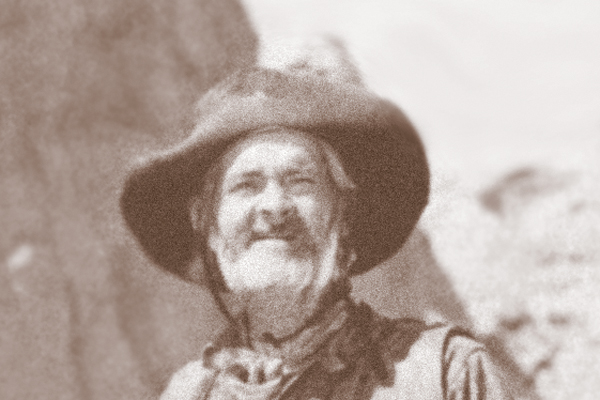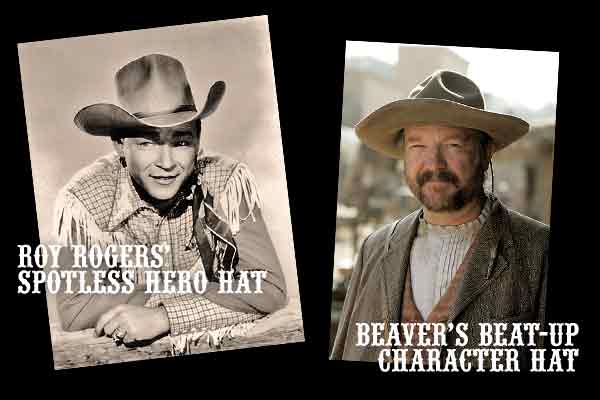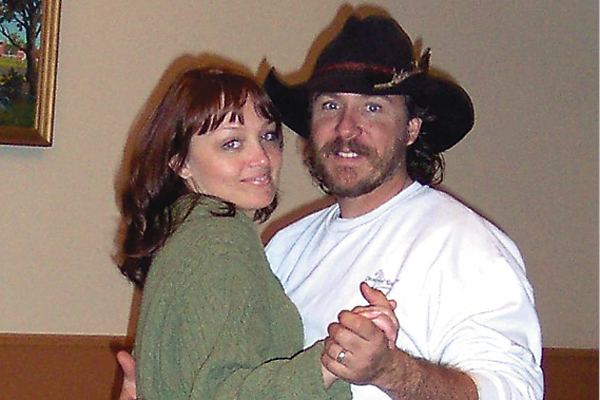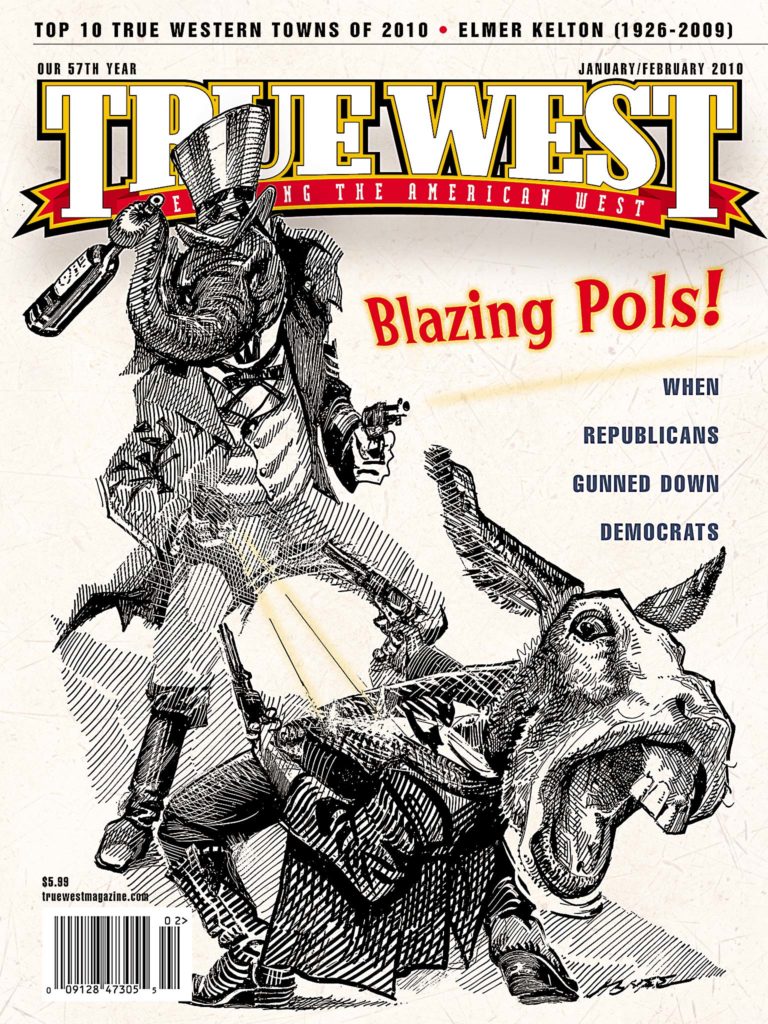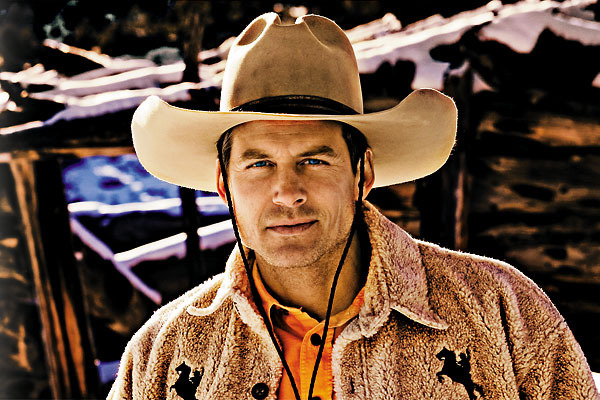
You can often tell a lot about a person by his or her choice of headwear, and few hats make louder statements than cowboy hats. You might wear a hat for protection from the sun or the cold. Or your hat might just be a fashion statement. But a hat is the most personalized piece of clothing you can wear. The style, quality, color, condition and tilt of your hat speak volumes about you (without you having to say a word).
Felt hats are the logical choice for Westerners in cold weather, but they can also be a long-term investment. Scraps of felt have survived since the Neolithic era, 9,000 years ago, making it the oldest form of cloth. Whether the basic felt is made out of fur or wool, all you need to make it is heat, water and pressure. The process of felting has evolved to a high art in fine hats.
The first known felt hats were narrow-brimmed affairs worn by ancient Greeks and their gods. J.B. Stetson fashioned the prototype of the cowboy hat to entertain his hunting companions back in the 1860s. By then, wide brims and tall crowns were already the signature look of cattlemen and horsemen from Texas to California. Spanish vaqueros wore sombreros with massive brims and crowns long before Stetson came along. ”Sombrero” is derived from the Spanish word for “shade” or “shadow;” a felt or straw sombrero protected its wearer from a relentless sun. The wide-brimmed and high-crowned hat Stetson fashioned out of fur felt was meant to be a joke, but ol’ J.B. laughed all the way to the bank. His influence was such that any large-brimmed hat smaller than a sombrero was called a Stetson for the next 40 years or more, and it is still the most famous name among hat brands.
Stetson’s first hat prices started at $5. Today, felt hat prices range from under $80 for wool or wool/fur blends to more than $1,000 for beaver fur hats. With felts, the price suggests quality, but sometimes it’s just for the bling. Here are some tips to keep in mind while shopping for a felt hat.
First, look for a store with a hat bar and a steamer (unless you just want an inexpensive wool felt that you plan to leave in your hotel room when you check out). A hat steamer is a pretty good sign that you’ll be talking to someone who actually knows something about Western headwear—and is not just talking through his hat.
Your purpose for buying a felt hat will help you determine whether it should be made of wool or fur felt. Wool makes the least expensive felt, but fur felt—usually rabbit, beaver or a blend—is more durable and more serviceable.
“The better the fur, the more abuse it will take and the easier it is to do something with it year after year,” explains Ritch Rand, owner of Rand’s Custom Hats. “There’s a market for wool felt hats. They’re nice; there’s not much investment. You put it on when it’s really cold; it protects your head. It sheds some water. But if you want something that’s going to be longer lasting, has a little better shape and feel, is comfortable on your head and you can wear it for dress as well as work, that’s when you get into a better fur felt hat.”
Pick out a felt hat with a height and shape or crease of the crown that appeals to you. Try on several styles and study yourself in the mirror. Don’t worry about what region or which Country star a crease might represent; think about what looks good on you and what you’re comfortable wearing. If you’re unsure, ask for opinions.
While you’re considering the crown styles, pay attention to the size and shapes of brims. The ratio between the horizontal brim and the vertical crown can be important to the visual balance and impact of the hat. They can run from about three inches to more than five inches, and may be flat, dipped, rolled, flanged or folded up like a taco shell.
Most hats you’ll see are production hats that machinery has shaped and creased. Some brands offer hats with hand-creased crowns or hand-shaped brims. That human touch is reflected in the price. Unshaped hats, called open crown hats, can be hand creased and shaped by knowledgeable staff in some Western stores. This is usually a free service if you buy the hat there, and it is the ultimate in personalized styling. “Hand shaping, instead of the assembly line process, always gives your hat a little more personality,” Ritch says. “It’s not so cookie cutter. Customers are a little more comfortable with it on their head because it was personalized. You can usually spot them.”
The third detail to consider as you try on hats is color choice. Black is the number-one selling color in cowboy hats of all styles and either sex, says Stan Redding, marketing manager at HATCO, the maker of Stetson, Resistol and Charlie 1 Horse brand hats. He adds that black is followed by brown, which is the fastest-growing color choice for men. Lighter-colored hats, generally referred to as pastels, rank third. These varying shades of white, grey, beige and khaki are less popular, but still respectable choices. If you are looking at pink, blue or purple shades of felt, you better be a rodeo queen, an alt-Country musician or looking to pick a fight down at the Silver Dollar Saloon. The trim on a hat, including binding on brims, is all a matter of personal taste and financial wherewithal.
You’ll also want to compare the quality of the felt hats, indicated by the Xs stamped in the sweat band. The more Xs, the higher the price and the better the quality, but no industry standards regulate the Xs. “Markings mean something different from brand to brand,” says Richard Milano, president of Milano Hat Company. “When a retailer has three black 20X hats by three different manufacturers, one might be priced at $200, one might be priced at $300 and one is retailing for $400. They’re not all the same hat.”
Milano says to look at the finishing touches to judge quality and value. A higher quality hat will have a sewn-in leather sweat. It will also be lined. A fine, smooth surface on the felt suggests a good blend of furs, especially from rabbits and beaver. If the felt is nubby and that hat is crushable, it is either all wool or a blend with a little fur.
Finally, make sure the hat fits comfortably. If it isn’t comfortable as soon as you put it on, try on another hat or even another brand.
Remember, your personal choice in a hat makes for a very public statement. Make sure you get it right.


